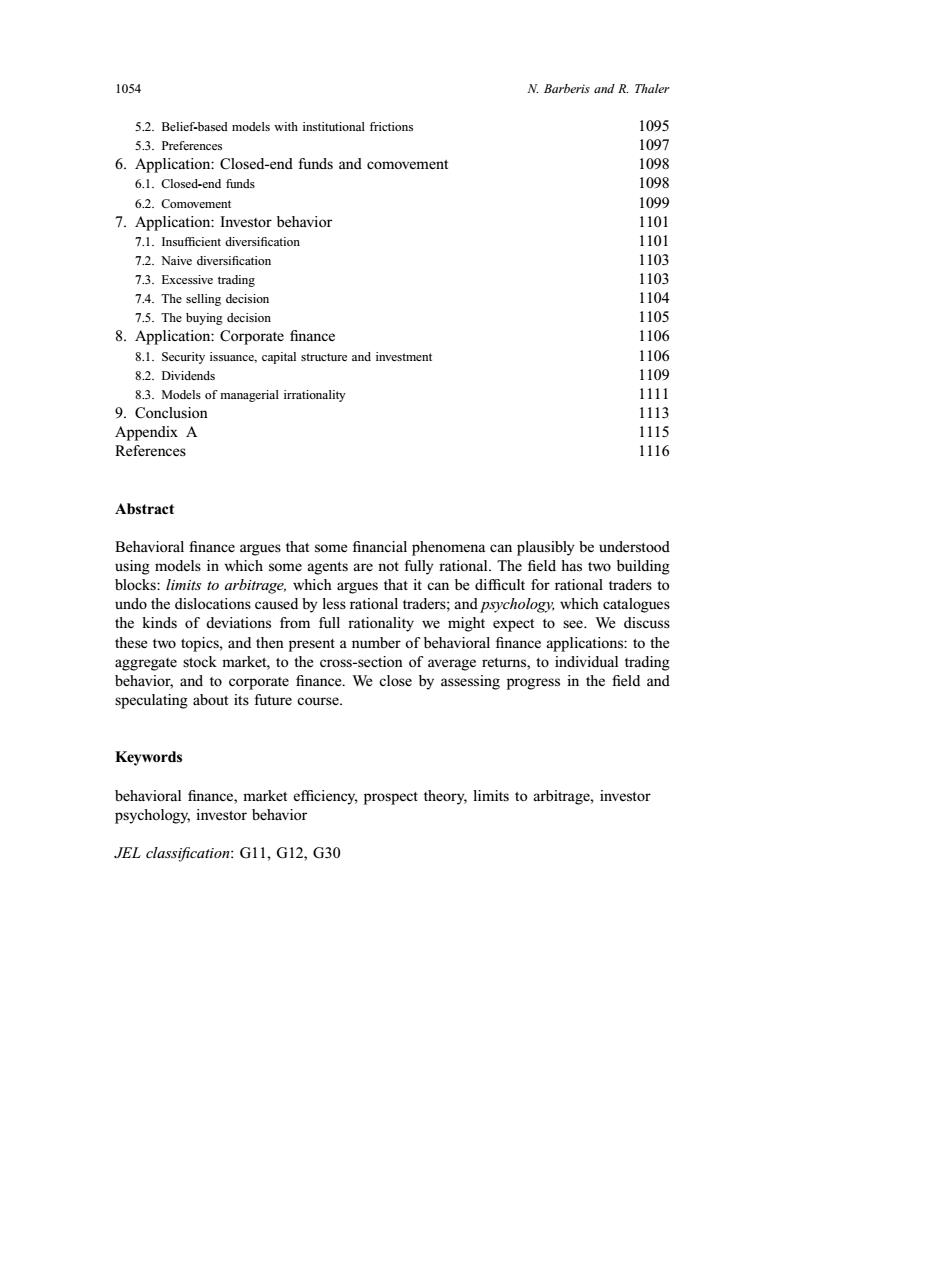正在加载图片...

1054 N.Barberis and R.Thaler 5.2.Belief-based models with institutional frictions 1095 5.3.Preferences 1097 6.Application:Closed-end funds and comovement 1098 6.1.Closed-end funds 1098 6.2.Comovement 1099 7.Application:Investor behavior 1101 7.1.Insufficient diversification 1101 7.2.Naive diversification 1103 7.3.Excessive trading 1103 7.4.The selling decision 1104 7.5.The buying decision 1105 8.Application:Corporate finance 1106 8.1.Security issuance,capital structure and investment 1106 8.2.Dividends 1109 8.3.Models of managerial irrationality 1111 9.Conclusion 1113 Appendix A 1115 References 1116 Abstract Behavioral finance argues that some financial phenomena can plausibly be understood using models in which some agents are not fully rational.The field has two building blocks:limits to arbitrage,which argues that it can be difficult for rational traders to undo the dislocations caused by less rational traders;and psychology.which catalogues the kinds of deviations from full rationality we might expect to see.We discuss these two topics,and then present a number of behavioral finance applications:to the aggregate stock market,to the cross-section of average returns,to individual trading behavior,and to corporate finance.We close by assessing progress in the field and speculating about its future course. Keywords behavioral finance,market efficiency,prospect theory,limits to arbitrage,investor psychology,investor behavior JEL classification:G11,G12,G301054 N. Barberis and R. Thaler 5.2. Belief-based models with institutional frictions 1095 5.3. Preferences 1097 6. Application: Closed-end funds and comovement 1098 6.1. Closed-end funds 1098 6.2. Comovement 1099 7. Application: Investor behavior 1101 7.1. Insufficient diversification 1101 7.2. Naive diversification 1103 7.3. Excessive trading 1103 7.4. The selling decision 1104 7.5. The buying decision 1105 8. Application: Corporate finance 1106 8.1. Security issuance, capital structure and investment 1106 8.2. Dividends 1109 8.3. Models of managerial irrationality 1111 9. Conclusion 1113 Appendix A 1115 References 1116 Abstract Behavioral finance argues that some financial phenomena can plausibly be understood using models in which some agents are not fully rational. The field has two building blocks: limits to arbitrage, which argues that it can be difficult for rational traders to undo the dislocations caused by less rational traders; and psychology, which catalogues the kinds of deviations from full rationality we might expect to see. We discuss these two topics, and then present a number of behavioral finance applications: to the aggregate stock market, to the cross-section of average returns, to individual trading behavior, and to corporate finance. We close by assessing progress in the field and speculating about its future course. Keywords behavioral finance, market efficiency, prospect theory, limits to arbitrage, investor psychology, investor behavior JEL classification: G11, G12, G30